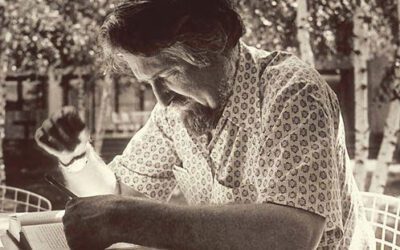What Can We Learn from Indigenous Practices?

The Resurgence of Psychedelics in the Modern World
In recent years, there has been a resurgence of interest in psychedelic substances as potential tools for healing and self-discovery. After decades of stigma and criminalization, drugs like psilocybin, LSD, and MDMA are now being studied in clinical trials for their therapeutic benefits. At the same time, many people are turning to indigenous shamanic traditions that have long used plant medicines and altered states of consciousness for spiritual growth and healing. As we explore this new frontier of psychedelic-assisted therapy, what wisdom can we glean from these ancient practices?
The Shamanic Worldview: Altered States and Wholeness
At the heart of shamanism is a recognition of the innate human capacity to achieve non-ordinary states of consciousness – and to harness them for insight, healing, and transformation. The shaman acts as a guide or facilitator, using techniques like drumming, chanting, fasting, and sacred plant medicines to help individuals navigate the inner landscapes of their psyche (Harner, 1990). The goal is often to restore a sense of wholeness and balance by integrating aspects of the self that have become fragmented or lost.
This shamanic perspective aligns with the theories of depth psychologists like Carl Jung, who saw the psyche as a self-regulating system always striving toward individuation or wholeness (Jung, 1966). Jung was deeply influenced by indigenous wisdom traditions and used methods like active imagination and dream analysis to access unconscious material. Stanislav Grof, a pioneer of psychedelic therapy, built upon Jung’s insights, observing that substances like LSD seemed to activate the deep psyche and open up transformative “non-ordinary” states of consciousness (Grof, 1980).
Psychedelic Therapy: The Science of Transformation
Modern research into psychedelic-assisted therapy echoes these perspectives. Psilocybin studies at Johns Hopkins and NYU have found that a single guided high-dose session can occasion profound mystical experiences leading to lasting increases in psychological well-being (Griffiths et al., 2016). MDMA-assisted psychotherapy has shown tremendous promise for treating PTSD (Mitchell et al., 2021). These substances seem to loosen rigid patterns of thought and behavior, opening a window of neuroplasticity that can be harnessed for healing.
Importantly, the ingestion of a psychedelic is part of a structured therapeutic protocol that includes preparatory counseling and post-session integration. The substance itself is not a panacea, but a tool that can catalyze insight and emotional processing when used in a safe, supportive context. In this sense, psychedelic therapy has much in common with traditional plant medicine ceremonies, where set and setting are carefully curated.
Bridging the Traditional and the Modern
Some have framed the modern psychedelic movement as an attempt to recapture the participatory consciousness and healing practices that Westerners have become disconnected from. “Shamanism is the most widespread and the most ancient methodological system of mind-body healing known to humanity,” writes anthropologist Michael Harner (1990, p.40). By returning to these roots, we may find an antidote to the “disenchantment of the world” that accompanied the rise of scientific materialism (Tarnas, 1993).
At the same time, analogies between indigenous and modern practices should not be overstated. Traditional shamanic rituals are embedded in specific cultural and cosmological frameworks, while psychedelic therapy takes place in a secular, medicalized context. Attempts to appropriate or commercialize indigenous practices deserve critical examination. But the phenomenological parallels are striking – and point to a shared human yearning for connection, meaning, and wholeness.
Towards an Integrative Approach
As research into psychedelic therapy continues to accelerate, we have much to learn from the accumulated wisdom of shamanic lineages. These traditions remind us that altered states of consciousness are not inherently pathological, but can be powerful tools for healing and growth when approached with skill and reverence. They also emphasize the importance of set, setting, and a holistic approach to treatment.
At the same time, any modern therapeutic framework must be grounded in scientific evidence and adapted to contemporary contexts. An open dialogue between indigenous wisdom keepers and psychedelic researchers could yield exciting synergies and innovations. The ultimate goal is to alleviate suffering and support human flourishing by integrating the best of the old ways and the new. In this sense, the psychedelic renaissance represents not just a medical breakthrough, but a societal evolution in how we understand the mind, meaning, and our capacity for transformation.
Bibliography
Grof, S. (1980) LSD Psychotherapy. Hunter House.
Griffiths, R. R., Johnson, M. W., Carducci, M. A., Umbricht, A., Richards, W. A., Richards, B. D., Cosimano, M. P., & Klinedinst, M. A. (2016). Psilocybin produces substantial and sustained decreases in depression and anxiety in patients with life-threatening cancer: A randomized double-blind trial. Journal of Psychopharmacology, 30(12), 1181-1197.
Harner, M. (1990) The Way of the Shaman. Harper & Row.
Jung, C.G. (1966) “The Aims of Psychotherapy” in The Practice of Psychotherapy, Collected Works 16. Princeton University Press.
Mitchell, J. M., Bogenschutz, M., Lilienstein, A., Harrison, C., Kleiman, S., Parker-Guilbert, K., … & Doblin, R. (2021). MDMA-assisted therapy for severe PTSD: a randomized, double-blind, placebo-controlled phase 3 study. Nature Medicine, 27(6), 1025-1033.
Richards, W.A. (2015) Sacred Knowledge: Psychedelics and Religious Experiences. Columbia University Press.
Tarnas, R. (1993) The Passion of the Western Mind. Ballantine Books.
Walsh, R. (1990) The Spirit of Shamanism. Mandala.
Winkelman, M. (2010) Shamanism: A Biopsychosocial Paradigm of Consciousness and Healing. Praeger.


























0 Comments